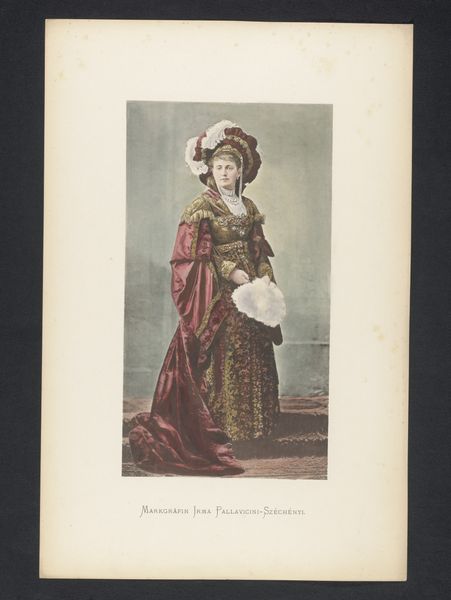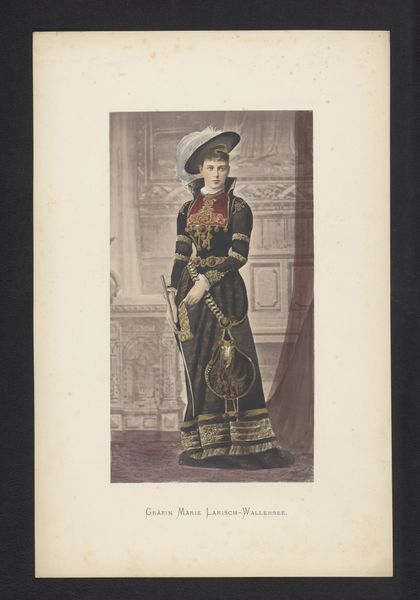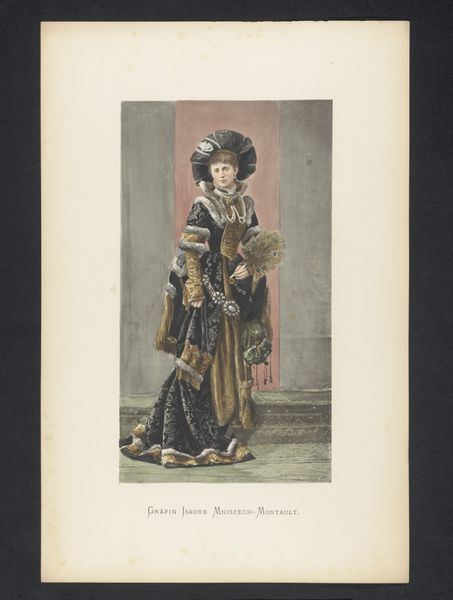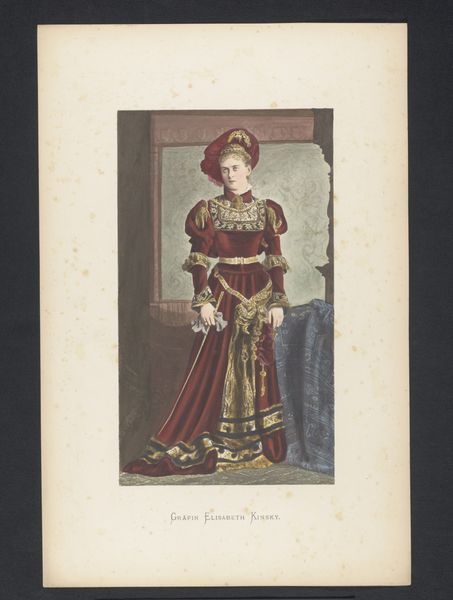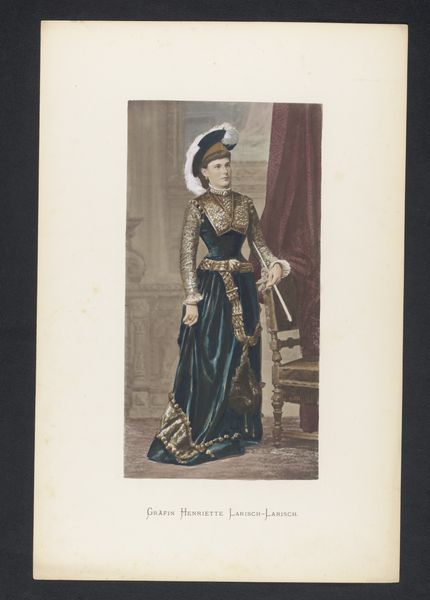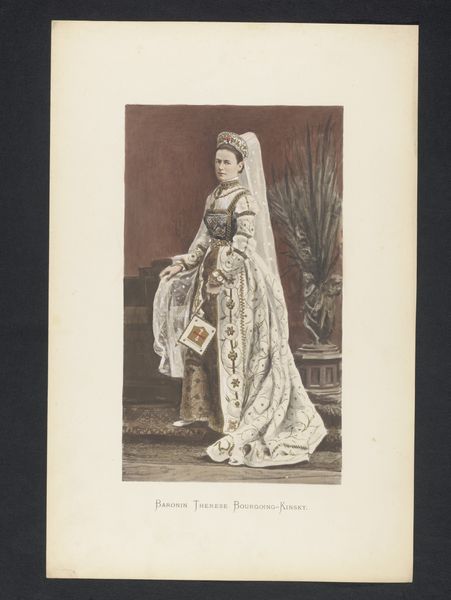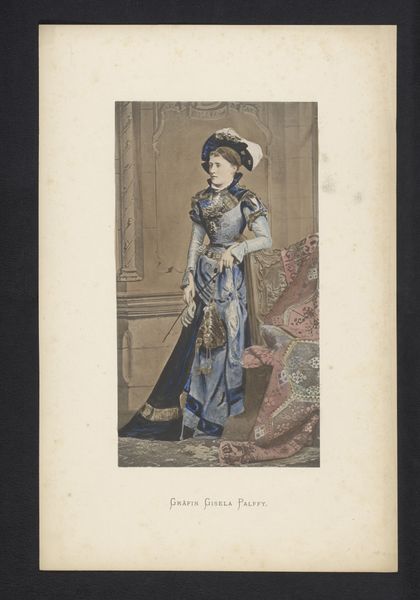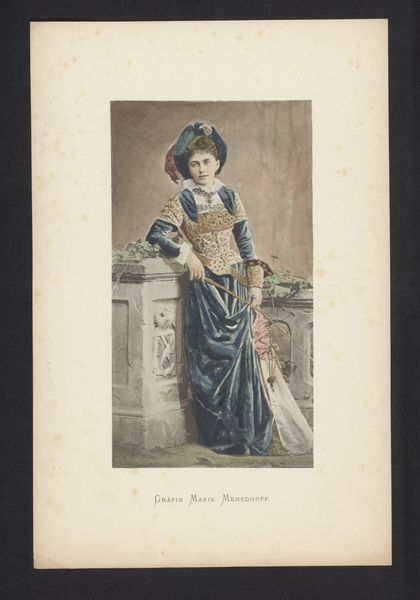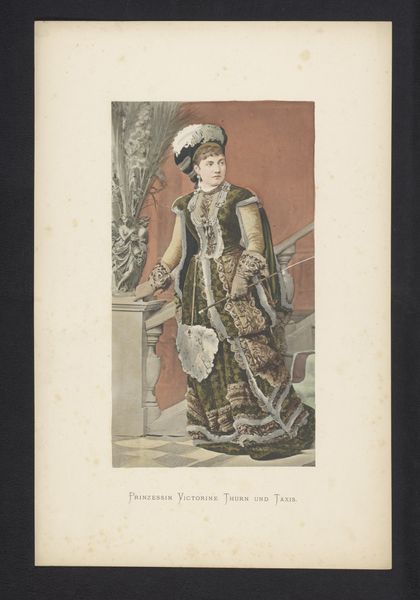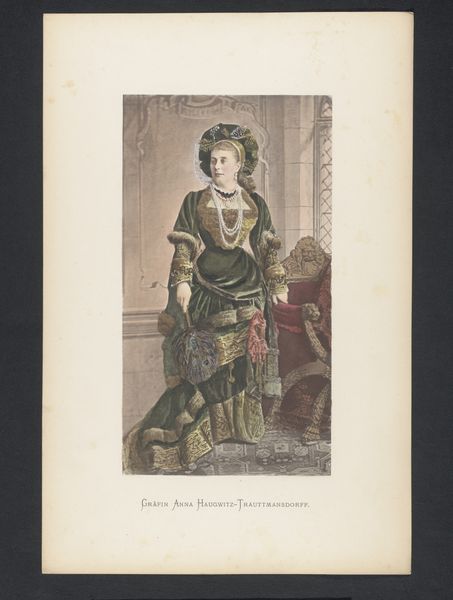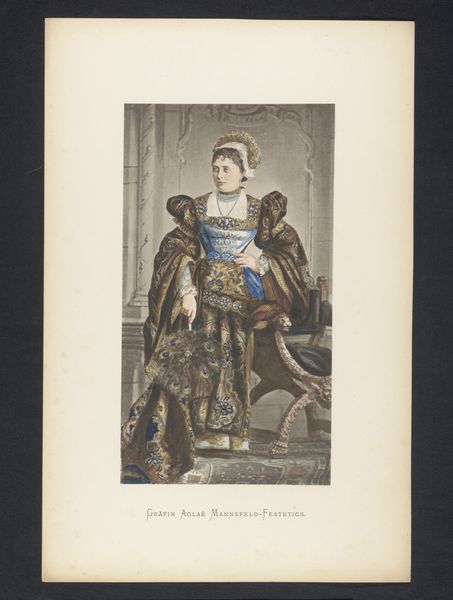
#
portrait
# print
Dimensions: height 370 mm, width 189 mm
Copyright: Rijks Museum: Open Domain
Curator: First impression? Somber, with a glimmer of gilded grace. It feels like stepping into a meticulously arranged stage set, all velvety shadows and controlled emotion. Editor: Exactly! We’re looking at a print titled “Portret van Wilhelmine Kinsky von Wchinitz und Tettau,” likely created sometime between 1880 and 1884. Note the artistic style known as Japonisme in her robe - it reflects the high society interest in Japanese art. Wilhelmine's elaborate costume definitely reflects the opulence of the late 19th-century aristocratic society. Curator: She appears adorned but trapped. Trapped within those frills and ruffles. Don't you sense an inner monologue brimming beneath that proper posture? Editor: I think you’re on to something. Portraits like these were definitely used to reinforce societal hierarchies and the woman's role. Wilhelmine would be showcasing her status through attire. Yet, she is positioned against a backdrop that evokes classical portraiture, thus situating her within the canon of European art. Curator: I imagine her questioning it all when the painter turns away; questioning her role. Questioning her agency in her own life. Editor: Precisely! And notice the print medium—while less expensive than a painting, a print made her likeness accessible to a broader audience, shaping and disseminating ideals of beauty and aristocratic femininity. Consider how she had very little influence in the choice of image or method of representation! Curator: Isn’t it intriguing to think about the dialogue that happens between subject, artist, and then the audience observing generations later? It’s an echoing ripple across time. Editor: Absolutely! Thinking about art's role in constructing history, while acknowledging perspectives often left unheard...That's a dialogue worth having. And this single image provokes such fascinating, and important, trains of thought.
Comments
No comments
Be the first to comment and join the conversation on the ultimate creative platform.
